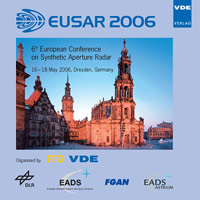Building Recognition in Urban Areas from Multi-Aspect High- Resolution Interferometric SAR Data
Konferenz: EUSAR 2006 - 6th European Conference on Synthetic Aperture Radar
16.05.2006 - 18.05.2006 in Dresden, Germany
Tagungsband: EUSAR 2006
Seiten: 4Sprache: EnglischTyp: PDF
Persönliche VDE-Mitglieder erhalten auf diesen Artikel 10% Rabatt
Autoren:
Thiele, Antje; Thoennessen, Ulrich; Cadario, Erich; Schulz, Karsten (FGAN-FOM Research Institute for Optronics and Pattern Recognition, Germany)
Soergel, Uwe (Institute of Photogrammetry and GeoInformation, University of Hannover, Germany)
Inhalt:
The improved ground resolution of state-of-the-art synthetic aperture radar (SAR) sensors suggests utilizing this technique for the analysis of urban areas. However, building reconstruction from SAR or InSAR data suffers from consequences of the inherent oblique scene illumination, such as foreshortening, layover, occlusion by radar shadow and multipath signal propagation. Especially in built-up areas, building reconstruction is often difficult from an analysis in a single SAR or InSAR measurement alone. An approach is presented to improve the reconstruction quality combining multi-aspect InSAR data. Building features are extracted independently for two directions from the magnitude and phase information of the interferometric data. After the projection of these initial primitive objects from slant range into the world coordinate system they are fused. This set of primitive objects is used to generate building hypotheses. Simulation of InSAR data according to the given sensor parameters has supported the analysis of illumination effects and the approach development. The simulation results have been compared with real imagery. Deviations between simulations and real data were the base for further investigations. The approach is demonstrated for two InSAR data sets of a building group in an urban environment, which have been taken from orthogonal viewing directions with a spatial resolution of about 30 cm.


